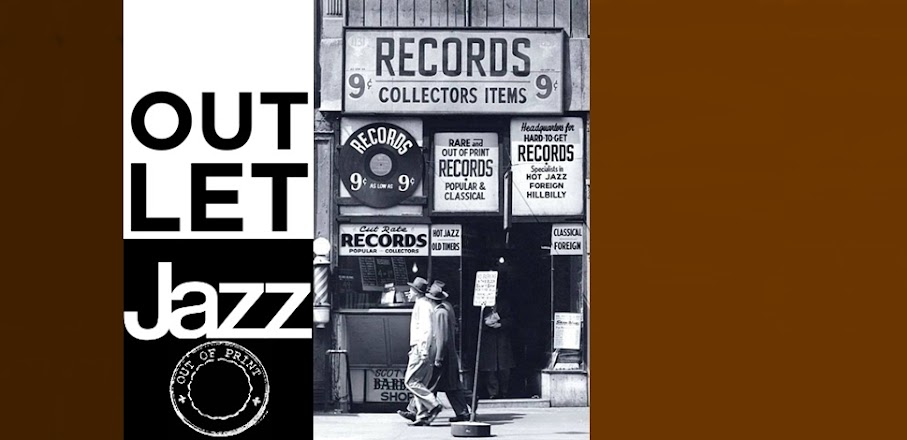Charles Bell was a well-trained classical pianist who graduated from Carnegie Institute of Technology in the early 1950s. He turned his attention to jazz at around 20 years of age and soon made his mark on the jazz scene with his Charles Bell Contemporary Jazz Ensemble landing a contract with Columbia Records.
Charles was commissioned by the Pittsburgh Symphony to write a three movement jazz symphony called "Concerto in Miniature of Jazz Quartet and Orchestra" that was conducted by Dr. William Steinberg in 1963. The Charles Bell quartet released several recordings on the Columbia and Atlantic labels and toured the world during the 1960s.
Charles lived rather quietly and obscurely in his New York City apartment at the time of his passing. *Dr. Nelson Harrison*
He wasn't an innovator, star or major figure, but pianist Charles Bell made some solid records in the early and mid-'60s. Influenced by the then emerging soul-jazz and funky schools, Bell's playing was vibrant, often exciting and full of blues licks, gospel phrases and inflections, plus some bop tinges. He called his first combo a contemporary jazz quartet, and their menu included vamp numbers, standards and originals. His trio albums were more dense, and emphasized his harmonic abilities. *Ron Wynn*
A very interesting compilation from 3 LPs of this group dating from 1960 thru 65. The DownBeat Record Review in 1961 gave it the full 5 stars and I quote "Bell's music avoids the coldness that condemned the offerings of Tristano. It's intellectual, but it's got heart". A Collectors Rarity on Vinyl brought back to life. *amazon.co.jp*
The Charles Bell Contemporary Jazz Quartet
Formed in 1958, Charles Bells quartet made its recording debut on Columbia with The Charles Bell Contemporary Jazz Quartet after being acclaimed at the 1960 Georgetown University Intercollegiate Jazz Festival. The groupall extremely proficient musicians who knew how exploit the potentialities of their instruments to the fullwas something new in jazz, with an approach to theme, variation and rhythmic pulse that seemed to set it apart.
Charles Bell (1933-2012) was a classically trained pianist of undeniably lush and harmonic abilities. Smith contributed impressively to the singular contrapuntal interplay between piano and guitar, while bassist Traficante, a good soloist, provided a solid rhythmic fulcrum, with Blairman a tasteful and intelligent drummer.
On the second groups album, Another Dimension recorded almost two years later for Atlantic Recordsa young and promising bassist named Ron Carter joined the group. On this set Bells approach is somewhat more eclectic, with the cerebral rather than the emotional more to the fore in a music that shares certain contemporary classical concepts, without forsaking the pulse at its core.
The remaining tunes of this compilation are trio performances recorded live on two different Pittsburgh Jazz Festivals. Bell plays a mix of jazz and popular standards with an individual and relaxed style that proves he was a deep and sensitive pianist of considerable talent. *Jordi Pujol*
*CD 1*
1 - Latin Festival
(Charles Bell)
2 - The Gospel
(Charles Bell)
3 - Stage 13
(Charles Bell)
4 - The Last Sermon
(Charles Bell)
5 - Counterpoint Study #2
(Charles Bell)
6 - Variation 3
(Charles Bell)
7 - Happy Funky
(Charles Bell)
8 - Theme
(Charles Bell)
9 - Bass Line
(Charles Bell)
10 - Satan Said
(Charles Bell)
11 - Portrait Of Aunt Mary
(Charles Bell)
*CD 2*
1 - Oleo
(Sonny Rollins)
2 - Django
(John Lewis)
3 - My Favorite Things
(R. Rodgers, O. Hammerstein II)
4 - Green Dolphin Street
(N. Washington, B. Kaper)
5 - Tommy's Blues
(Tommy Sewell)
6 - Summertime
(G. and I. Gershwn)
7 - Prancing
(Miles Davis)
8 - Work Song
(Brown, Adderley)
9 - Whisper Not
(Benny Golson)
10 - Memories Of Home
(Charles Bell)
11 - Take Five
(Paul Desmond)
12 - Whisper Not
(Benny Golson)
13 - Bluesette
(Toots Thielemans)
#1 to #7 [CD 1]:
from the album The Charles Bell Contemporary Jazz Quartet (Columbia CS8382)
Charles Bell (piano), Bill Smith (guitar), Frank Traficante (bass), Allen Blairman (drums).
Recorded in New York City, July 8, 1960.
#8 to #11 [CD 1] and #1 to #3 [CD 2]:
from the album Another Dimension (Atlantic SD1400)
Charles Bell (piano), Bill Smith (guitar), Ron Carter (bass), Allen Blairman (drums).
Recorded in New York City, March 9 and 10, 1962.
#4 to #11 [CD 2]:
from the album The Charles Bell Trio in Concert (Gateway SLP7012)
Charles Bell (piano), Tommy Sewell (bass), William Harris (drums).
Recorded live at Carnegie Lecture Hall, Pittsburgh, November 9, 1963.
#12 [CD 2]:
from the album The Jazz Piano (RCA-Victor LSP3499)
#13 [CD 2 - not issued on LP]:
Charles Bell (piano), Larry Gales (bass), Ben Riley (drums).
Recorded live at the Jazz Piano Workshop of the Pittsburg Jazz Festival, June 20, 1965.


























